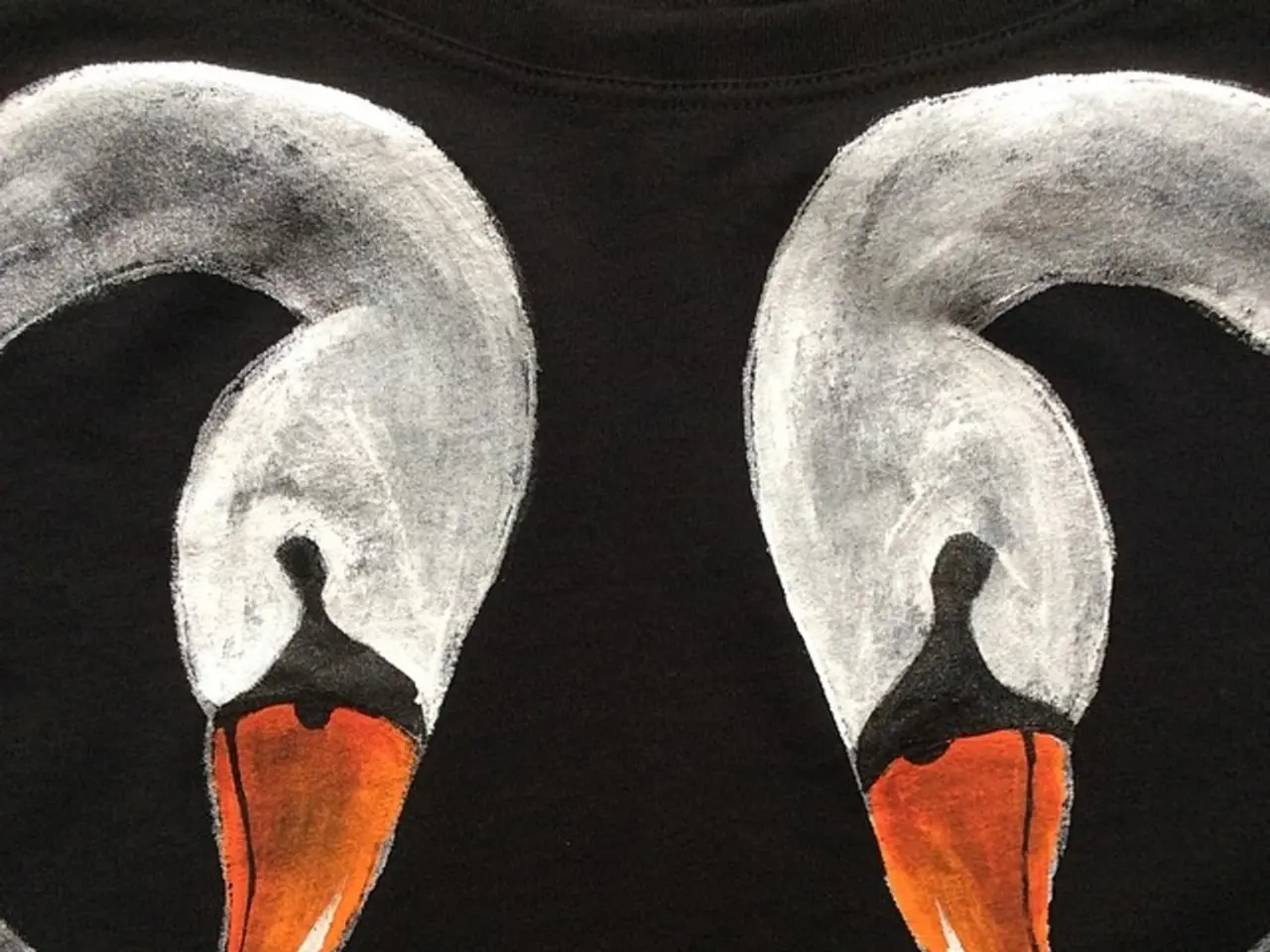Art community's reaction to the decision regarding the 'MetaBirkin' NFT and its implications for the future of artistic and commercial sales
=================================================================================
In the world of digital art and fashion, the recent MetaBirkin NFT verdict has sent ripples, underscoring significant implications for both art and commerce. NFTs (Non-Fungible Tokens) are transforming the retail landscape, challenging digital ownership, authenticity, and brand control.
The verdict, which saw a jury ruling against NFT creator Mason Rothschild in a trademark trial involving luxury brand Hermès, has brought questions about trademark law, the combination of art with commerce in the metaverse, and more to light.
The discussion around Rothschild's appeal, art, and virtual initiatives from brands is featured in an episode of The Backroom, hosted by Daphne Howland and Dani James. The show, produced and edited by Caroline Jansen, delves into the implications of Rothschild's appeal and its impact on the broader art and commerce landscape.
In retail and fashion, NFTs are increasingly used for product authentication, digital twins, and resale authentication. Luxury brands are experimenting with NFTs linked to physical items and digital wearables, shifting what it means to “own” fashion from purely physical possession to hybrid digital-physical experiences stored in crypto wallets.
The MetaBirkin NFT case, involving an NFT derivative of the iconic Hermès Birkin bag, highlights legal tensions around copyright, trademark, and unauthorized use of luxury brand imagery in NFTs. The verdict affirms that while NFTs can certify digital ownership, they do not exempt artists or creators from intellectual property laws.
The verdict’s implication for art is that NFTs are not a "free pass" to use famous brands or artworks without permission. This encourages both artists and brands to innovate NFTs collaboratively and with clarity on licensing.
Commercially, the verdict encourages retailers to adopt NFTs as part of authenticated digital ownership and customer engagement strategies while managing IP risk. The growth of NFTs in fashion and resale markets, with integration of AI tools and blockchain for managing listings and provenance, shows that NFTs are becoming essential in retail tech innovation.
Market data reflecting a surge in art NFT sales coupled with a drop in volume suggests NFTs are becoming more accessible and widely used in retail contexts, likely including luxury and fashion sectors, empowering consumers with affordable entry points and expanding digital commerce.
Examples of brands that have entered the NFT space include Tiffany, Prada, Pacsun, and more recently, American Eagle Outfitters, which has launched an NFT Apparel Shop. Puma's metaverse experience tied to NYFW is another instance of retailers connecting the metaverse to real-world revenue streams.
The discussion in The Backroom highlights the potential for NFTs to transform the retail industry, as more brands explore the metaverse and its revenue-generating possibilities. However, it also underscores the need for careful navigation of IP law to ensure a balance between creative expression and brand protection.
For those interested in learning more about the MetaBirkin NFT creator's appeal, the connection of the metaverse to real-world retail, and how retailers are leveraging NFTs, an article from Retail Dive provides valuable resources.
[1] How retailers are connecting the metaverse to the real world and revenue [2] MetaBirkin NFT creator to appeal Hermès trademark verdict [3] Puma's first metaverse experience ties NFTs to NYFW [4] The impact of NFTs on the retail industry
- The MetaBirkin NFT verdict, a legal battle between NFT creator Mason Rothschild and luxury brand Hermès, underscores significant challenges for both art and commerce in the intersection of digital ownership and traditional law.
- As artists and brands delve into the metaverse, AI tools, blockchain, and gadgets are increasingly being used to enhance fashion and beauty, reshaping the retail landscape and blurring lines between physical and digital lifestyles.
- In the world of data and cloud computing, NFTs are being exploited to create digital twins, product authentication, and even resale authentication, with fashion and lifestyle brands experimenting with hybrid digital-physical experiences in the metaverse.
- As more retailers, such as Tiffany, Prada, Pacsun, American Eagle Outfitters, and Puma, enter the NFT space, there is a growing need for social media platforms and lifestyle bloggers to discuss these ventures and their impact on the broader fashion-and-beauty, entertainment, and shopping sectors.
- With the MetaBirkin NFT case highlighting legal tensions around copyright and trademark for luxury brand imagery in NFTs, it is crucial for brands and artists to collaborate on NFTs while considering data-and-cloud-computing and technology implications and understanding the importance of social-media engagement for consumer outreach.
- The ongoing MetaBirkin NFT trial's debate about the role of NFTs in the retail industry, combined with its implications for art, commerce, and intellectual property, encourages brands and artists to contribute to the fashion, lifestyle, and entertainment space with a balanced approach that respects both creative expression and brand protection.




